From sky to land: radar-guided air-to-air missiles used as part of ground-based air defense systems
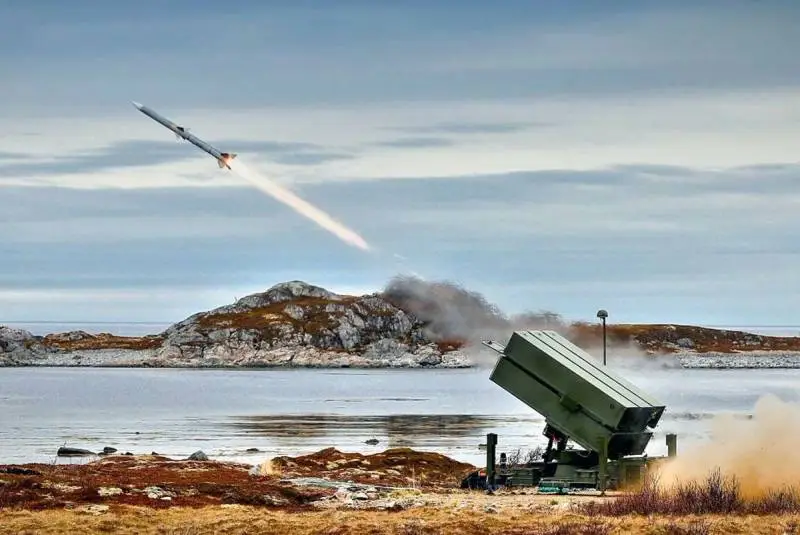
From the very beginning, developers of air combat missiles sought to ensure superiority over the enemy by increasing the range of destruction, maneuverability, a larger number of simultaneously fired targets and improving noise immunity.
The longest-range air-to-air missiles (for example, the Soviet R-37 or the American AIM-120 AMRAAM) use an active radar homing head (ARH), which guides the missile to the target at the final stage of the flight. At the initial and middle sections of the trajectory, inertial and command-inertial control are used.
Recently, there has been a tendency for long-range missiles to be additionally equipped with space radio navigation system receivers. Equipping long-range air-to-air missiles with such devices is associated with the intensive development in the leading countries of the world of networked combat control systems, as well as with the ability of the carrier and the weapon to receive data from other sources, for example, from AWACS aircraft or long-range ground-based radars. The presence of a satellite navigation system allows you to clarify data on the current position of the missile in space relative to the target, the firing aircraft, and other objects and form an optimal flight path.
The advantage of missiles with an ARL seeker is that they can be used against visually unobservable air targets in the “fire and forget” mode, and after launching the missile, the carrier’s maneuverability is not limited. However, such missiles are very expensive; according to information published in American sources, the cost of one AIM-120C-7 missile launcher is about $1,8 million.
Anti-aircraft missile systems based on the AIM-120 AMRAAM missile launcher
Currently, one of the most promising for use as part of anti-aircraft missile systems is a guided missile with an active radar homing head AIM-120 AMRAAM (Advanced Medium-Range Air-to-Air Missile - advanced medium-range air-to-air missile) .
The development of this missile began in the late 1970s, after US Defense Department experts came to the conclusion that it was necessary to have a long-range missile capable of operating in “fire and forget” mode in the arsenal of American combat aircraft. However, due to technical, financial and organizational difficulties, the process of designing and testing the rocket was delayed, and the pilot batch of AIM-120 was released only in 1988. Development of Air Force missiles and aviation The US Navy occurred in the early 1990s.
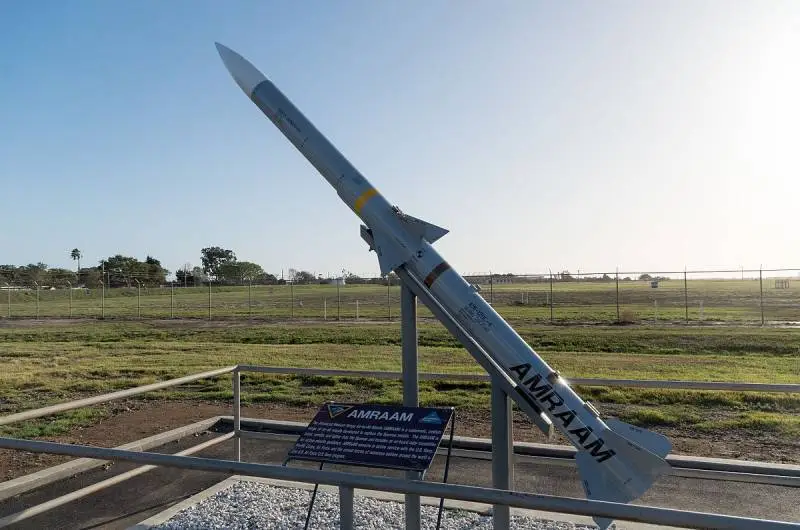
The AIM-120 missile is made according to a normal aerodynamic design with an x-shaped arrangement of wing consoles and rudders and externally resembles an enlarged AIM-7 missile launcher. The rocket body is coated with a special paint that can withstand significant kinetic heating.

Layout diagram of the AIM-120A missile
When firing at a long range, the AIM-120 flight path can consist of three sections: autonomous inertial, command-inertial and active radar. The active homing mode can be immediately used in close air combat when firing at a visually visible target. When the target is not observed visually, its search is carried out by the fighter's onboard radar.
After detecting a target using radar, the pilot engages and launches the missile. In this case, the carrier's onboard sighting and navigation system pre-calculates the missile's meeting point with the target. Before launch, the target coordinates are loaded into the inertial navigation system of the rocket from the carrier. After the launch of the AIM-120 missile launcher, the onboard equipment of the carrier aircraft tracks the target’s trajectory. If the target does not maneuver, then no correction commands are transmitted from the carrier. Guidance of the missile in the initial phase is carried out only with the help of its own INS, and then the active radar seeker begins to operate.
According to American data, target detection with an EPR of 3 m² is possible at a distance of up to 18 km. If the target is maneuvering, the fighter's avionics calculates the trajectory, and the corrected coordinates are transmitted to the missile. Using the carrier's onboard equipment, it is possible to simultaneously target up to eight missiles launched at various targets. The on-board equipment monitors for each missile the time remaining until the active seeker locks on the target, which makes it possible to timely turn off the transmission of correction commands.
When active jamming is targeted, the missile equipment in the middle and final sections can switch to a passive mode of targeting the jamming source. The selection of the appropriate guidance mode is carried out based on the “fire and forget” concept, according to which the pilot must get out from under a possible enemy retaliatory attack as soon as possible by switching the missile launcher to the homing mode.
Approximately the same operating algorithm is used on other modern air combat missiles, with an active radar homing head. There is information that the new AIM-120D missile, in addition to the listed control methods, also uses GPS navigation.
Currently, eight serial combat modifications of the AIM-120 missile launcher are known. After the appearance of the first AIM-120A, the following variants improved the on-board equipment, improved noise immunity, used new software, more advanced warheads and proximity fuses, and increased the firing range.

UR AIM-120C
The AIM-120 missile has a length of 3 mm and a diameter of 066 mm. Starting weight is about 178 kg. Wing span – 160 mm (AIM-447C-120). The firing range of the AIM-7C-120 missile when launched from an air carrier reaches 7 km. But when launched from a ground installation, this figure is significantly less.
After the end of the Cold War, the NATO command largely lost interest in ground-based air defense systems, which led to the curtailment or slowdown of programs for the creation of new medium-range air defense systems and the modernization of existing ones.
However, a number of companies continued to proactively develop new anti-aircraft systems, some of which were brought to the stage of serial construction and entered service.
The American-Norwegian NASAMS (Norwegian Advanced Surface-to-Air Missile System) is considered a very successful medium-range air defense missile system.
The development of this complex in the first half of the 1990s was started by a consortium of the American company Hughes Aircraft (later absorbed by Raytheon Corporation) and the Norwegian Norsk Forsvarteknologia (now part of the Kongsberg Defense group). In the new NASAMS air defense system, Hughes Aircraft used existing developments in the AdSAMS air defense system, which also included the use of the AIM-120 aircraft missile, which significantly speeded up the testing and development process.
At the first stage of testing, AIM-120 missiles were launched from towed installations of the American Improved HAWK air defense system.
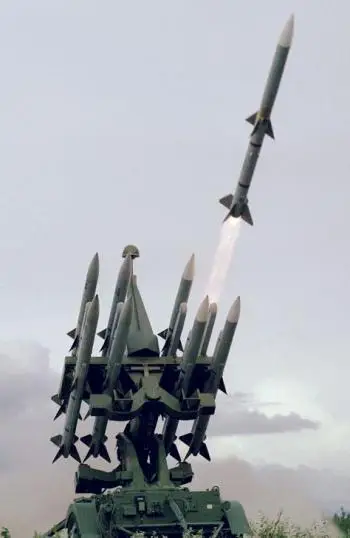
This option made it possible to make the complex cheaper. But subsequently the customer demanded the use of sealed transport and launch containers, which was very important when carrying out combat duty in the difficult climatic conditions of Norway.
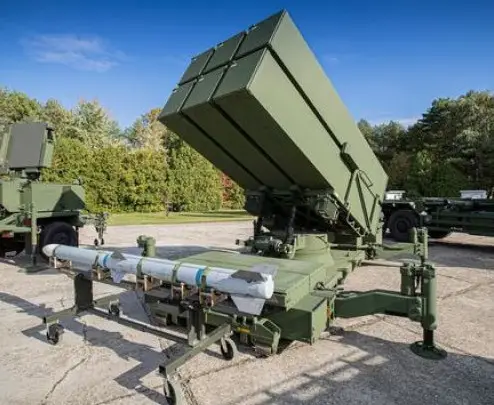
In 1995, the Norwegian Air Force signed the first contract for the acquisition of NASAMS air defense systems. In 2005, work began on integrating Norwegian systems into the joint NATO air defense control system and improving their combat characteristics. The upgraded NASAMS II air defense system entered service with the Norwegian Air Force in 2007. NASAMS II control centers are capable of exchanging and processing information in Link 16, Link 11 and JREAP formats.
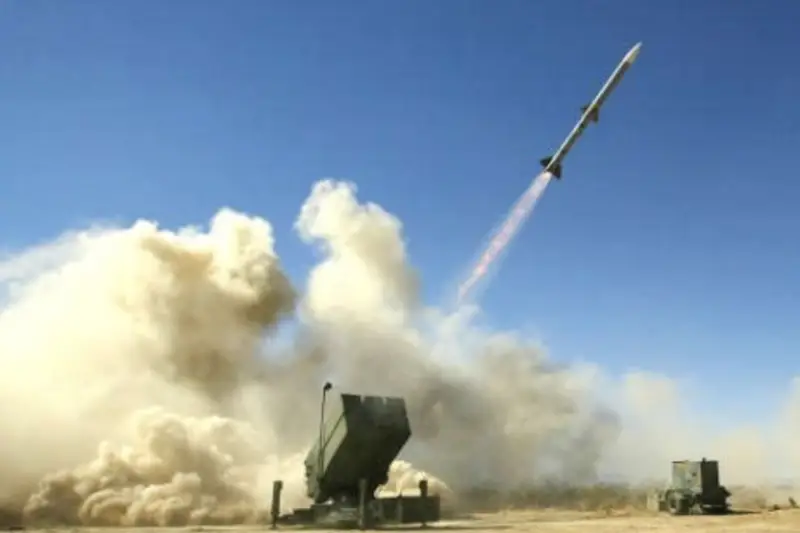
The NASAMS air defense system includes a multifunctional three-dimensional radar Sentinel AN/MPQ-64F1, a passive optoelectronic station MSP500, an FDC control center and a mobile communication center GBADOC, which allows integration into the upper echelon network for information exchange. Various radars and associated command posts are networked via radio channels, allowing real-time display of the air situation.
The Sentinel AN/MPQ-64F1 radar and MSP500 OLS are based on an army all-terrain vehicle, and the control center and mobile communications center are mounted in standard cargo containers.
The AN/MPQ-64F1 radar, launchers and optoelectronic stations can be deployed at a distance of up to 2,5 km from the control point. The search and sighting equipment of the anti-aircraft battery is capable of simultaneously tracking 72 targets.
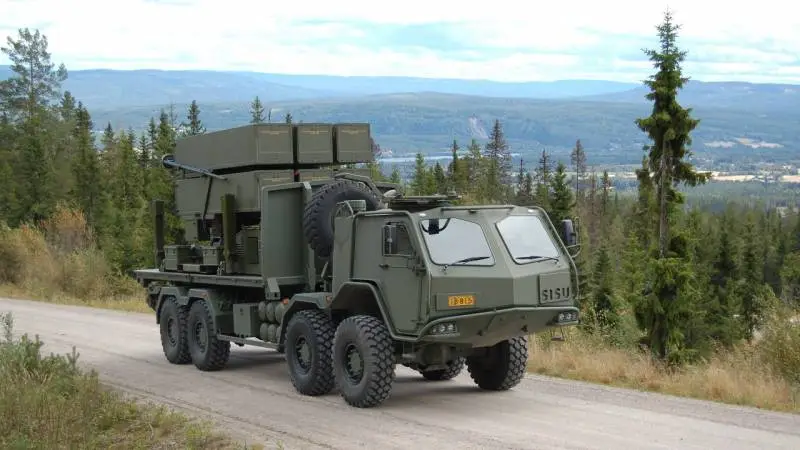
Heavy trucks of various types can be used to transport launchers, a control center and a mobile communications center.
The multifunctional high-resolution radar Sentinel AN/MPQ-64F1 has an instrumental range of 120 km and, in addition to target detection, is used for illumination and guidance.
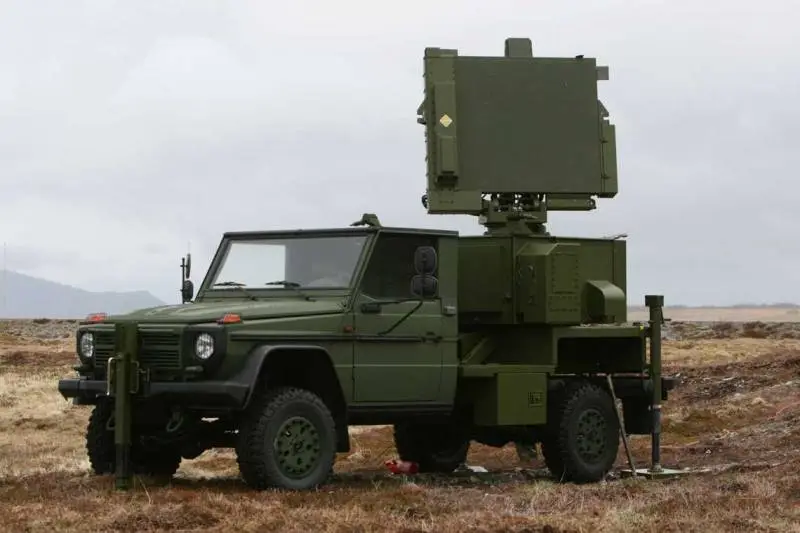
Radar Sentinel AN/MPQ-64F1
In a difficult combat situation, the AN/MPQ-64F1 radar can operate in a highly directional beam mode, which reduces the risk of disclosing the complex’s position and targeting anti-radar missiles.
To search for a target, the MSP500 passive optoelectronic station can also be used, which includes a high-resolution television camera, a thermal imager and a laser rangefinder, which ensures the launch of the AIM-120 missile defense system without turning on the AN/MPQ-64F1 radar.
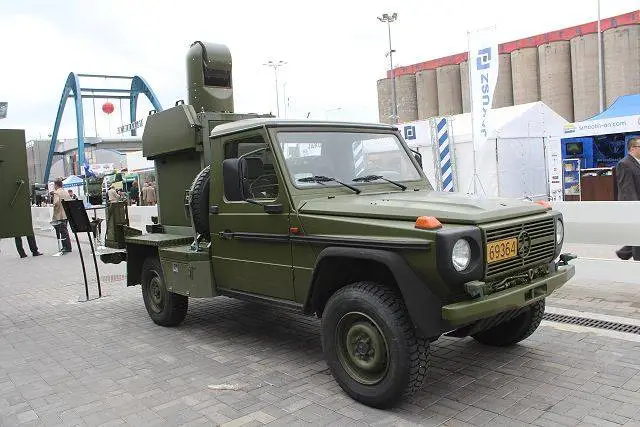
In this case, the target is captured by the active radar homing head of the missile while still on the ground or after launch, but the affected area with this guidance option is smaller than when working together with a multifunctional radar.
The firing range for the NASAMS II air defense system is 30 km, and the altitude reach is 20 km. When firing AMRAAM-ER missiles, the range and altitude parameters increase by approximately 1,5 times.
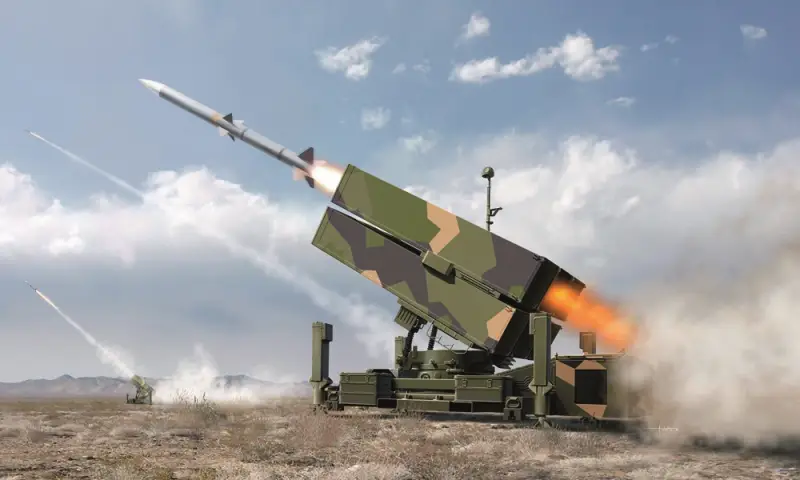
NASAMS complexes of various modifications are in service in Norway, the Netherlands, Spain, Finland, Oman, Lithuania and Indonesia. After the events of 2001, one air defense system was deployed in central Washington (Americans sometimes use the unofficial designation MIM-120A). In the fall of 2022, it became known that eight NASAMS II air defense systems were planned to be transferred to Ukraine.
In addition to the NASAMS air defense system, AIM-120 aircraft missiles were also intended to be used as part of the HUMRAAM mobile air defense system (HMMWV+ AMRAAM). In the mid-1990s, the US military explored the possibility of creating a military complex with all elements placed on a Humvee chassis.
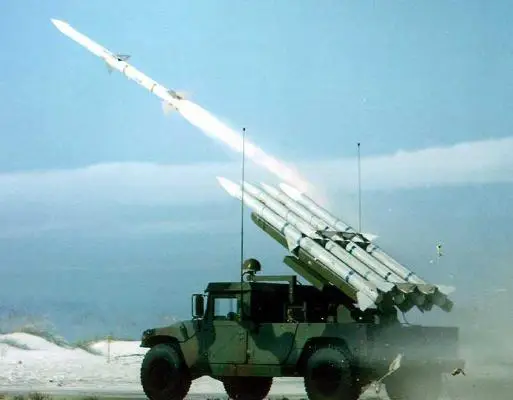
The first launches of AIM-120A missiles as part of the HUMRAAM air defense system were carried out in August 1997, and firing at a cruise missile simulator took place in July 1998. During testing, the experimental model ensured interception of targets at a distance of up to 15 km. If new modifications of the AIM-120 were used, the firing range could be increased by 30%.
The Army subsequently abandoned the use of the HMMWV chassis. Relatively lightweight for missiles of this class, self-propelled launchers based on HMMWV received significant damage during the launch of missile defense systems, and the latest version of the air defense system was tested on the chassis of an FMTV truck. However, despite the encouraging test results, the contract for the purchase of mobile air defense systems with AIM-120 missiles never took place.
The version intended for the Marine Corps is known as CLAWS (English: Complementary Low Altitude Weapon System).
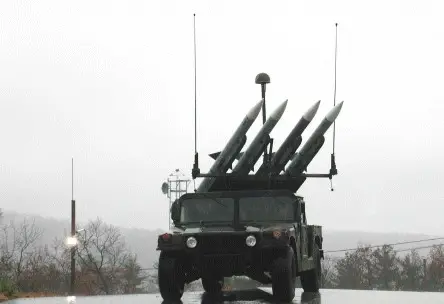
In April 2001, Raytheon received a task from the USMC to develop the CLAWS air defense system, intended to replace the outdated MIM-23 Hawk air defense system. The Marine Corps command planned to purchase up to 95 CLAWS combat vehicles.
In 2005, during tests at the White Sands test site (New Mexico), the combat capabilities of the new complex were confirmed when operating in various conditions, including at night. However, in 2006 the order was canceled.
The main reason for abandoning the army HUMRAAM air defense system and CLAWS, intended for the Marine Corps, were financial restrictions associated with the high cost of AIM-120 missiles. In addition, the military criticized the open location of unprotected missiles, which made them vulnerable to external influences and weather conditions.
Improved Israeli Spyder air defense system with Derby missile
Israel is consistently among the countries with access to the most modern types of military equipment and weapons made in the United States.
The Israeli F-15C/D/I, F-16C/D/I and F-35I fighters are armed with AIM-120 AMRAAM long-range missiles. However, the high cost of American missiles and the desire to have their own analogue of a missile launcher of this class led to the fact that in the mid-1980s the Rafael company began developing the Derby air combat missile, which had a certain degree of continuity with the Phiton-4 short-range aviation missile launcher. Derby was first officially presented at the Le Bourget Aerospace Show in June 2001.
According to information announced at international arms exhibitions, the Derby medium-range aircraft missile with an active radar homing head is designed to destroy highly maneuverable manned and unmanned air attack weapons, at any time of the day, from any direction, in the front and rear hemispheres, against the background of the underlying surface and with active electronic countermeasures.
It is especially emphasized that the smaller dimensions and weight than the AIM-120 allow the Derby missile to be used from lighter fighters such as the F-5E and JAS-39 Gripen. An important factor contributing to the success of the Israeli missile with an ARL seeker on the international arms market is its moderate price. Compared to the American AIM-120, the Israeli Derby missile is approximately half the price. The missile was purchased by Chile and India, Singapore and the Philippines.

Israeli UR Derby
The Derby rocket is made using a canard aerodynamic design. The starting weight of the first version was 115 kg; in later modifications it increased by 10–15%. The weight of the warhead is 23 kg. Length – 3,62 m, wingspan – 0,64 m, flight speed – 4 M. Firing range – up to 70 km.
In 2015, production of the improved I-Derby ER (Extended Range) missile began with a firing range increased to 100 km, with a new dual-mode solid-fuel engine and a two-way data link developed by Rafael, through which the fighter pilot or air defense system operator receives information with ARL seeker, both about the target itself and about other targets in the viewed area. This allows you to reorient the missile in a timely manner (for example, if the target has already been hit by another missile or another target is recognized as a higher priority) or to launch additional missiles.
Soon after the start of production of the Spyder air defense system, which initially used missiles with Python-4 and Python-5 IR seekers, the Derby aviation missile defense system with an active radar homing head was adapted for this complex.
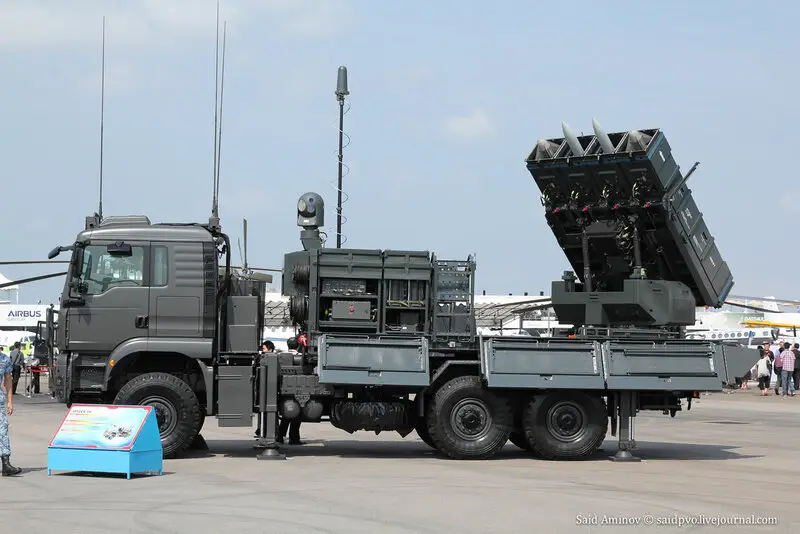
Spyder-SR self-propelled air defense missile launcher with Python-5 and Derby missiles
The use of missile defense systems equipped with various types of seekers allows for sequential firing of targets with medium- and short-range missiles. When launched from an inclined launcher of the Spyder-SR air defense system, the maximum firing range of the Derby missile defense system is 40 km.
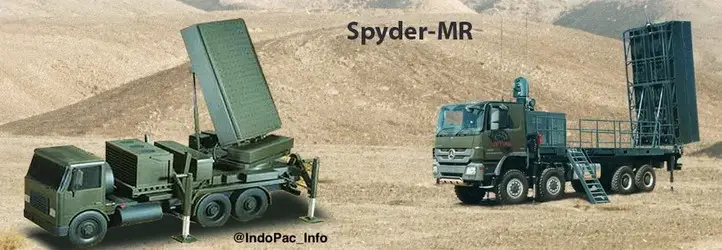
If the Spyder-MR air defense system uses a Derby missile with an additional launch accelerator and receives target designation from the EL/M-2084 MMR mobile multifunctional radar station, the firing range of a vertically launched missile can reach 60 km.
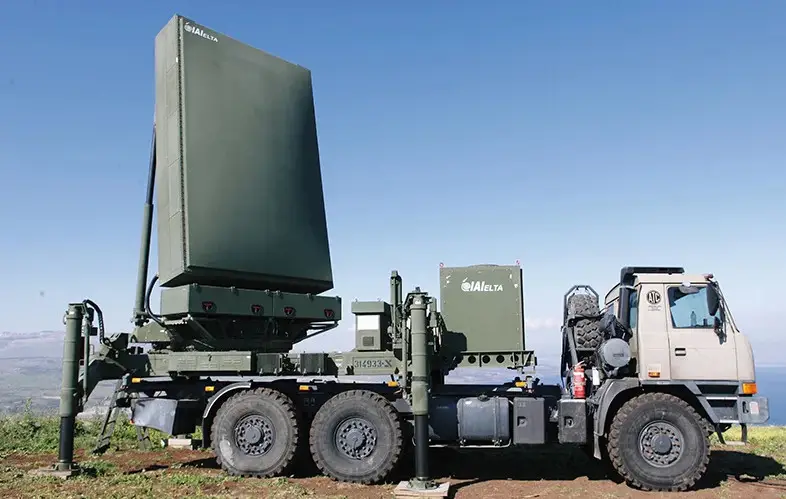
Antenna post of multifunctional radar EL/M-2084 MMR
The three-dimensional radar with AFAR EL/M-2084 MMR from ELTA, operating in the decimeter frequency range (from 2 to 4 MHz), has an instrumental range of 470 km and can simultaneously track 200 targets. Without antenna rotation, the viewing area is 120 degrees.
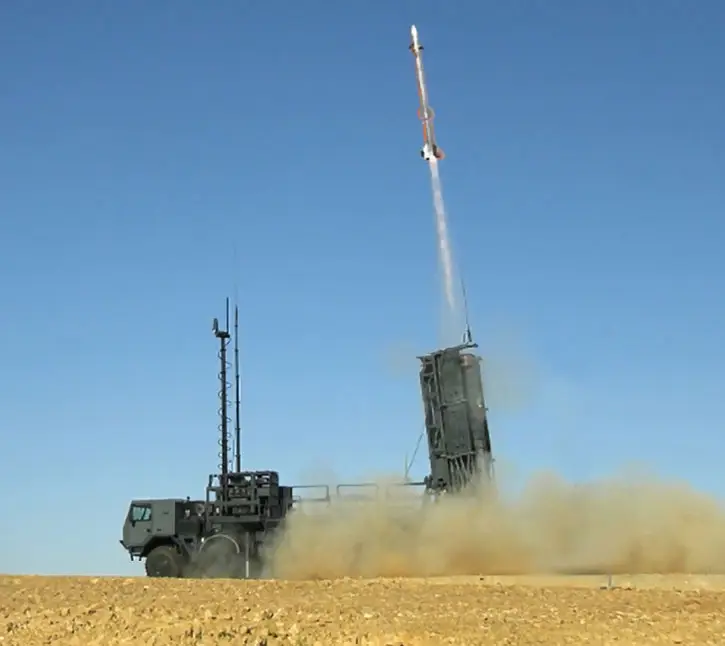
The most advanced air defense system in this family is the Spyder-LR, whose ammunition includes vertically launching Python-5 and I-Derby ER missiles equipped with an accelerator. The affected area of this complex at medium altitudes reaches 80 km.
Promising Russian air defense system based on the R-77 air-to-air missile
In the USSR, work on studying the possibility of using aircraft missiles as part of ground-based and sea-based air defense systems has been carried out since the second half of the 1980s. Research conducted by specialists from the State Design Bureau "Vympel" (today part of the Tactical Missiles Corporation) confirmed the possibility of using the R-27 missile launcher to destroy air targets when launched from a stationary launcher located at sea level. However, the collapse of the USSR led to the freezing of research in this area, and they returned to it already in the 1990s.
In 1996, at the Defendory international exhibition in Athens, a model of an anti-aircraft missile with a vertical launch based on the RVV-AE (R-77) air-to-air missile was demonstrated.
Depending on the modification, the R-77 has a firing range of 80–110 km. Flight speed – 4 M. Launch weight – 175 kg. Length – 3,5 m. Diameter – 200 mm. The weight of the warhead is 22 kg. The ARL acquisition range of a target with an EPR of 5 m² is 20 km.
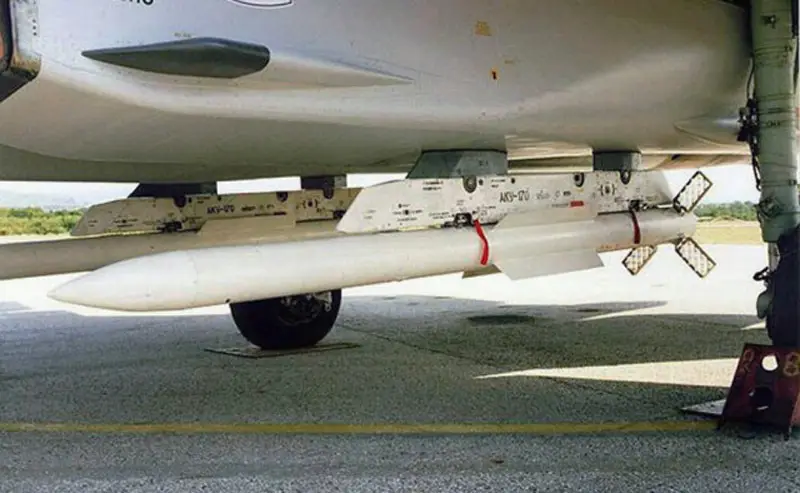
UR R-77
The lattice rudders can fold and, if necessary, automatically open after launch. This ensures minimal transport dimensions (a square with a side of 300 mm), and also solves the problem of reducing the overall effective reflective surface of the aircraft.
Apparently, given the scarce funding of the defense industry, this topic did not find support from the Russian Defense Ministry, and there were no foreign customers willing to pay for the promising development.
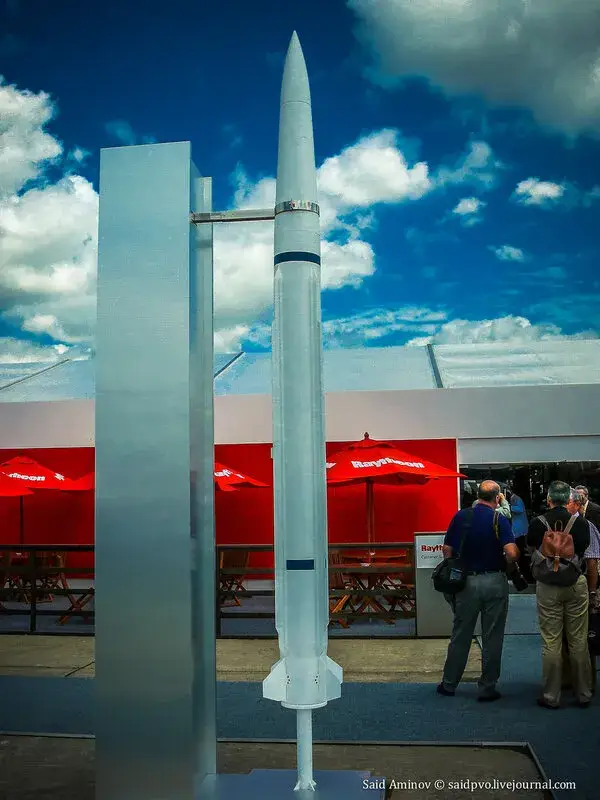
At the MAKS-2005 exhibition, a transport and launch container with an R-77 missile launcher was presented, which could be launched from a ground-based towed launcher based on the carriage of the 57-mm AZP-57 (S-60) anti-aircraft gun. The anti-aircraft version of the R-77 was created in collaboration with the Almaz-Antey air defense concern.
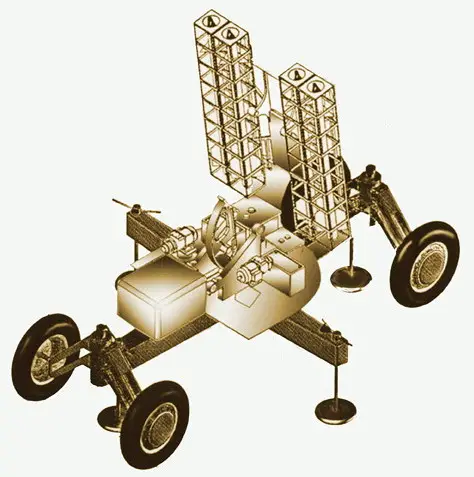
Calculations have shown that the firing range of a vertically launched rocket without the use of an additional upper stage will be no more than 20 km. Due to the fact that at that time the R-77 missile had not yet been adopted by the Russian Aerospace Forces and was offered only for export, the creation of an anti-aircraft complex with this missile system stalled.
A version of a bicaliber anti-aircraft missile with an increased diameter of the engine compartment was being developed. However, information on how far this topic has progressed in terms of practical implementation is not publicly available.
Information